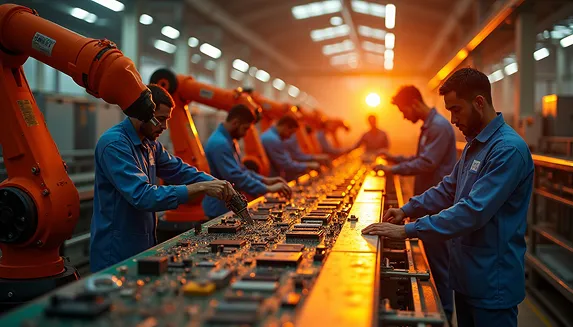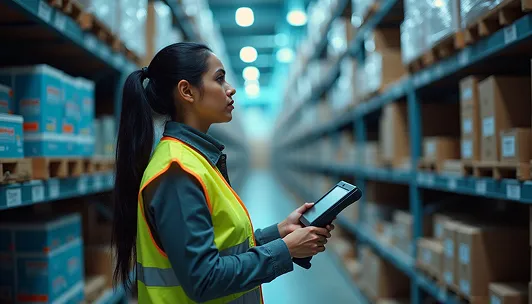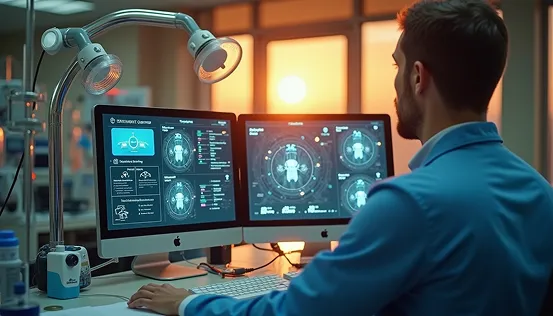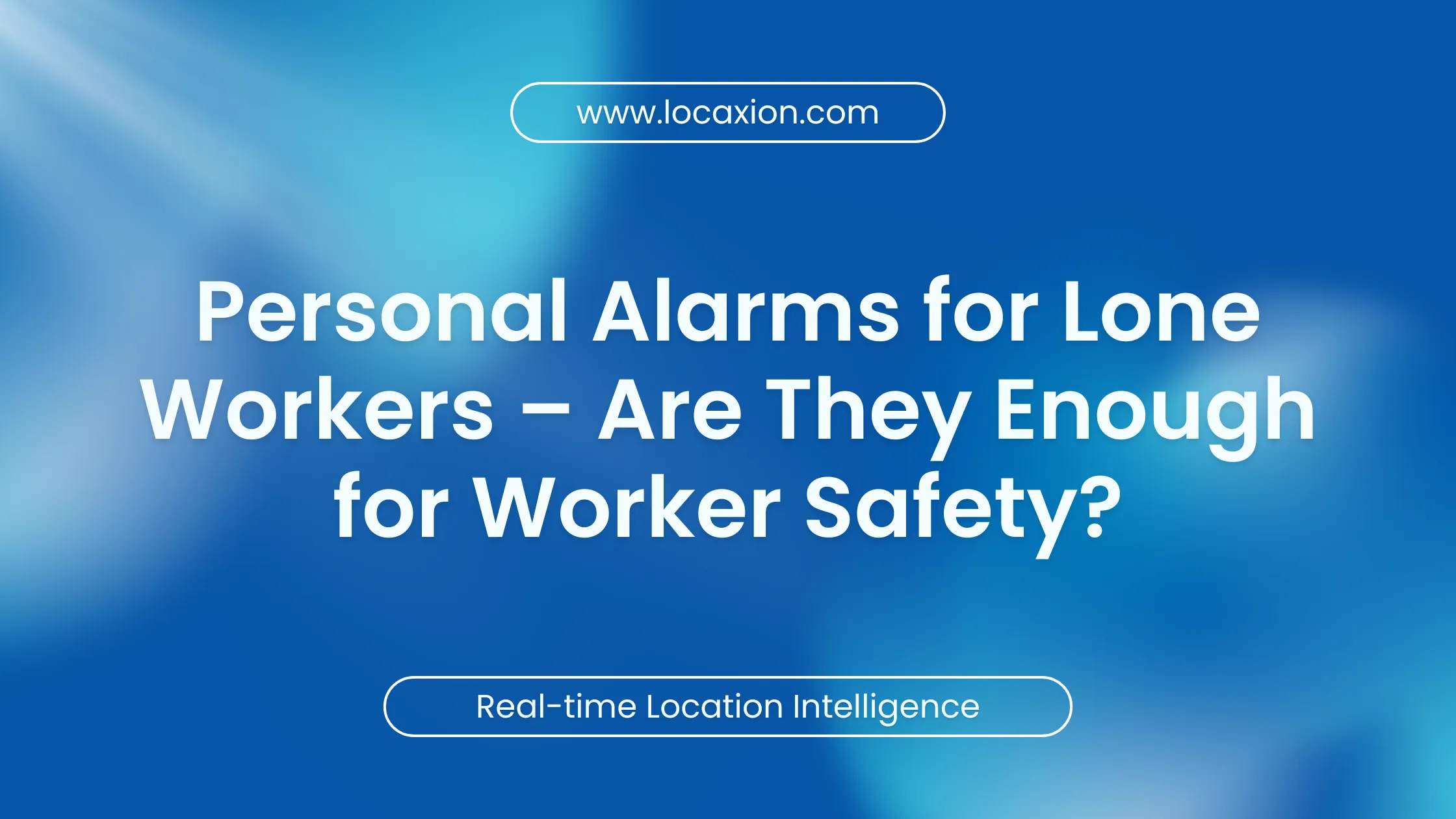Indoor Asset Tracking Solutions
Maximize Efficiency with Real-Time Tracking
Managing assets on the shop floor or warehouse can be complex, but with Locaxion’s RTLS-powered indoor asset tracking solutions, you can gain real-time insights to streamline management, optimize asset utilization, and boost operational efficiency — all tailored to your facility’s needs.
How the RTLS Asset Tracking System Optimizes Your Operations
Manufacturing
- WIP Tracking: Real-time tracking of work-in-progress (WIP) reduces production bottlenecks and ensures smooth workflows, boosting efficiency and production timelines.
- Quality Control: Continuous visibility helps identify quality issues early, preventing defects and rework, ensuring high product standards.
- Automated Systems Integration: Automates transactions between Manufacturing Execution Systems (MES), ERP, and WMS, streamlining operations and improving data accuracy.
- Raw Material Tracking: Tracks raw materials in real time, ensuring availability and preventing machine downtimes, enabling uninterrupted production.
- Equipment Utilization: Monitors tool and equipment usage, improving maintenance schedules and reducing idle times, maximizing productivity.


Warehouses
- Real-Time Inventory Tracking: Minimizes stockouts by providing continuous visibility into inventory levels and locations, enabling accurate demand forecasting.
- Order Picking Accuracy: Increases picking speed and accuracy by pinpointing item locations in real time, enhancing order fulfillment and reducing errors.
- Automated Replenishment: Automates restocking processes, ensuring high-demand items are always available, improving stock levels and reducing human error.
- Shelf Space Optimization: Tracks inventory movement and optimizes shelf space based on demand, improving warehouse capacity and storage efficiency.
- Vehicle & Equipment Tracking: Monitors forklifts, AGVs, and other assets to reduce idle times and improve safety, optimizing warehouse workflows.
Healthcare
- Medical Equipment Availability: Real-time tracking ensures critical equipment like ventilators and infusion pumps are always accessible, minimizing downtime.
- Patient Tracking: Monitors patient flow and optimizes bed allocation to reduce bottlenecks and improve care delivery, enhancing patient experience.
- Compliance and Safety: Ensures medical equipment is sanitized and maintained according to health and safety regulations, reducing risks and ensuring compliance.
- Temperature-Sensitive Storage: Monitors temperature-sensitive medications to ensure they stay within required storage conditions, safeguarding patient health.
- Workflow Optimization: Enhances hospital workflow efficiency by reducing delays, improving patient throughput, and enhancing overall care quality.

Why Locaxion is the Right Partner for Your RTLS Journey?
100+ Location Intelligence projects
With expertise across over 100 successful projects, we deliver proven solutions for manufacturing and warehousing industries.
15+ years of experience in RTLS
Our team brings extensive expertise in RTLS, digital twins, and smart factory consulting alongside leading industry partners.
Strong Network of Top RTLS
We collaborate with industry-leading RTLS and digital twin providers to create tailored, client-specific solutions.
Why You Should Adopt an Indoor Asset Tracking System Across Healthcare, Warehouses, and Manufacturing
Real-Time Location Tracking
Custom Alerts & Notifications
Historical Data & Reporting
Key Benefits of Indoor Asset Tracking Solutions
Drive Cost Savings
Optimize asset utilization and minimize time spent searching for equipment or supplies, reducing operational costs and increasing asset lifespan.
Enhance Workplace Efficiency
Utilize real-time data and automated alerts to ensure assets are where they are needed, reducing delays and enhancing overall productivity.
Boost Compliance & Safety
Track critical equipment and materials, ensuring they meet safety standards and regulatory requirements, while also preventing theft or misplacement.
Key Performance Statistics
~60%
Reduction | 9 minutes saved per search
Faster Asset Search Time
~25%
Higher Asset Utilization
~33%
Reduced Unplanned Downtime
~52%
Lower Theft & Asset Loss
~9%
Improved Inventory Accuracy
Explore Real-Life Use Cases, Guides, and Insights on RTLS Asset Tracking
If you’re new to the world of manufacturing process automation, welcome. You’re stepping…

24 Jun 2025
Lone workers face unique risks every day, from environmental hazards to sudden medical…

31 Mar 2025
In today’s fast-paced industrial environments, ensuring worker safety and optimizing operational efficiency are…

31 Mar 2025
Unlock Real-Time Insights with RTLS Indoor Asset Tracking
Frequently Asked Questions
What is real-time asset tracking?
Real-time asset tracking uses advanced technologies to constantly track and log the whereabouts and status of physical assets. It involves:
- Tags or Sensors: These transmit information on location, status, or movement of assets.
- Network Infrastructure: Technologies like UWB, BLE, RFID, Wi-Fi, or GPS enable communication between tags and a central system.
- Tracking Software: Provides a graphical interface to view and monitor asset location and data.
Real-time tracking empowers organizations with instant information for proactive decision-making, such as preventing delays in manufacturing, improving warehouse management, and optimizing patient care in healthcare.
What is the difference between RFID and RTLS?
Both RFID and RTLS are used for asset tracking, but they differ significantly in terms of technology, functionality, and applications.
- Technology:
- RFID uses electromagnetic fields to detect tags within a range, with passive RFID tags relying on power from a reader, while active RFID tags have their own power source.
- RTLS combines technologies like UWB, BLE, or Wi-Fi for continuous, real-time tracking.
- Tracking Ability:
- RFID provides location data only when a tag is scanned, offering point-in-time identification.
- RTLS offers constant tracking with sub-meter accuracy and real-time updates.
- Application Scenarios:
- RFID is used for inventory management, retail item tagging, and access control due to its affordability and simplicity.
- RTLS is ideal for environments like hospitals, manufacturing, and large warehouses, requiring real-time asset visibility and movement tracking.
- Infrastructure Complexity:
- RFID requires strategically placed readers for scanning.
- RTLS involves a more complex system with anchors, gateways, or sensors for real-time location triangulation, providing greater capabilities.
What are the key features to look for in an RTLS asset tracking system for manufacturing facilities?
Key features to prioritize for manufacturing facilities include:
- Location Accuracy: Achieved using technologies like UWB or BLE.
- Real-Time Tracking & Alerts: Essential for tracking assets and receiving updates.
- Durability: Use of durable RTLS tags, especially for harsh environments.
- System Integration: The system must integrate seamlessly with existing MES or ERP systems to optimize workflows.
Are there customizable options available for tailoring an RTLS asset tracking system to specific industry requirements?
Yes, RTLS asset tracking systems are highly customizable to fit various industry needs. These systems are scalable, offering flexibility to adjust for specific purposes. Advanced technologies ensure that they work seamlessly to meet unique requirements across industries.
How much do asset trackers cost?
The cost of asset trackers depends on the technology, features, and use case:
- RFID Tags: Typically cost $0.10 to $5 per tag, with additional costs for readers.
- BLE Trackers: Range from $5 to $50 per device, depending on battery life, durability, and features.
- UWB Trackers: Cost $20 to $100 per unit, offering higher accuracy for precision-based industries.
- GPS Trackers: Ranging from $30 to over $200, suitable for outdoor tracking with advanced features like geofencing.
Additional costs include infrastructure (readers, gateways, antennas), software, and maintenance. Consider both the initial investment and long-term ROI based on operational improvements.


